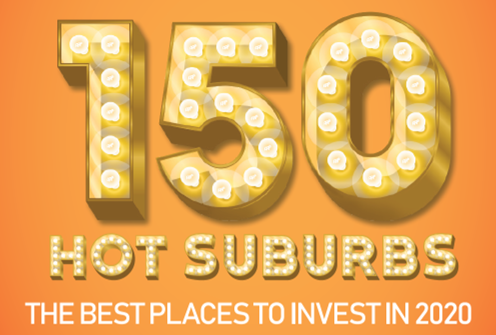Usually, we kick things off by highlighting 100 suburbs that have strong performance potential as property investments. But this year, in celebration of our 150th issue, we’ve decided to ramp things up and create a hit list of 150 suburbs Australia-wide that have landed on our experts’ radar.
So how were these suburbs selected? Once again, we turned to the experts, who gathered and analysed data on a range of suburbs across Australia, before sharing with us their shortlist of the neighbourhoods that show the best promise for growth in 2020. The suburbs included in the list have been chosen for a number of reasons:
Affordability: Full disclosure: not all of the suburbs in this list are considered “affordable”. In fact, there are more than a few locations with a 7-figure median. However, we aimed to find suburbs with competitive prices, either for the base of people they appeal to, or compared with neighbouring areas with a similar offering.
Demand: Each suburb had to pass the criterion of being a desirable place to live. These are areas where a large and diverse tenant base would put long-term demand on accommodation.
Demographics: Suburbs with a growing population are key, as these ensure increasing and continuing demand to underpin the housing market. We also paid attention to suburbs where the average household income of residents was increasing.
Economy: Property markets backed by sound economics generally have the best price and rent growth potential, so we looked for regions that boast a solid economy to support wage growth.
Infrastructure: In those suburbs where there are upgrades planned, underway or recently completed – such as new roads, more schools, new amenities, gentrification and/or urban renewal – then we took a closer look.
What didn’t make the cut?
- Holiday havens: These areas can be volatile and are often the first to lose value during a market correction.
- One-industry towns: small, isolated, regional communities that rely only on one major industry to sustain its economy were avoided.
- Retirement locations: A large base of non-working residents does not create a strong foundation for growth.
- Speculator markets: These are suburbs that may benefit from a one-off boost due to an as-yet unconfirmed development, infrastructure or investment.
- High-risk suburbs: If it makes the lender cautious, it should make you cautious, too. Risky postcodes were eliminated from the list.
Our experts
Are these suburbs 100% guaranteed to perform?
In a word: no. While our annual suburb guide leverages the most up to date data and insights from some of the country’s most well-known and respected experts, analysts and economists, = there is no such thing as a “sure bet”.
As such, a suburb’s inclusion in this list does not guarantee profits or returns.
Instead, we suggest you consider this list as a starting point from which to launch your own due diligence.
Ask yourself:
- What is my strategy?
- What is my investing timeline?
- What is my risk profile and budget?
- How does this suburb fit with my strategy?
- Can I afford to invest now and what is my exit strategy?
Do you want know our expert's picks for 2020?
Download the special report now.

